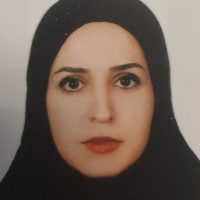The Role of Comfort Perception, Especially Thermal Comfort in the Pattern of Citizen's Behavior in Urban Spaces (Case Study of Imam Khomeini Square and Imam Hussein in the City of Tehran)
The success of a public urban space is in attraction of the citizens to itself. The climate conditions and the conditions of thermal comfort are factors affecting the usage pattern of pedestrians in public urban spaces. In general, awareness of sensory information and understanding of the complex process called the perception of them. Psychological aspects and its impact on the evaluation of thermal comfort make a different perception of thermal sensation. Adaptation is the most important psychological factors affecting thermal comfort perception. with the focus on functional factors, factors were evaluated in the case studies using inductive and deductive methods and survey studies. In the objective section, after collecting climate data required for urban areas studied and at different times of the day and in both the cold and warm seasons (January and July), analysis was performed. In the mental section, after extracting the studied variables such as personal characteristics, the reason and time of exposure, type and amount of activities, etc. the variables were assessed by observation, collaborative approachand using the views of pedestrians in the case studies. Then, a part of the results of questionnaire was analyzed in terms of causal relationships and correlation using SPSS software and another part was analyzed qualitatively. In order to prepare the questionnaire, some questions were set corresponding to each criterion. It was designed based on 5-option Likert scale. Reliability analysis and alpha coefficient were used to analyze the accuracy of the questions and to measure the level of appropriateness of the research tools. According to the Cochran formula, sample size was totally estimated 390 for both cold and warm seasons (the peak of cold and heat and lack of thermal comfort in Tehran Town) and both case studied. With the inclusion of some questionnaires with runtime errorsof thermal comfort and environmental psychology were asked to revise the questionnaire. 50 questionnaire were firstly considered as Pretest and then 150 questionnaires were filled out (that is, a total of 200 for the winter) and 200 other questionnaires were filled out in the summer. In the present study, case studies are two historical urban spaces located in the center of Tehran Town: Imam Khomeini (AS) Square) that named in this articles analyzes as place 1) and Imam Hussain Square) that named in this articles analyzes as place 2). Also, in Imam Hussain (AS) Square, there is a 17th Shahrivar walkway which is connected to the square and there is a Bab-e Homayun walkway in Imam Khomeini Square. Considering the emphasis on the conditions of thermal discomfort as the assumption of this research, two selected urban spaces were investigated during the times from 8:00 to 20:00 in the warmest and coldest days of the year. In present study, in summary, only 12:00 as the warmest day in summer (for Imam Khomeini Square) and 18:00 as the coldest day in winter (for Imam Hossein Square) were presented as a spatial examples and in the form of thermal comfort simulation maps. Because at these times, the intensity of heat and cold increases (due to the sun radiation). Also , In order to evaluate physical adaptation, the responses examined, in both warm and cold seasons, leaving the space in the later place is more compared to the former place. Since this factor is influenced by thermal adaption, it emphasizes the superiority of the former place on the second one in terms of thermal adaptation. It should be noted that in the first place where street restaurants exist, people have easy access to food and drink after a feeling of discomfort, but there are fewer such facilities in the second place. As a conclusion it should be noted that the main objective of present study is: to change urban planners perspective from prioritizing physical comfort (whether thermal comfort of its other types such as light, smell, visual comfort, etc.) to promoting psychological aspects of environment.
- حق عضویت دریافتی صرف حمایت از نشریات عضو و نگهداری، تکمیل و توسعه مگیران میشود.
- پرداخت حق اشتراک و دانلود مقالات اجازه بازنشر آن در سایر رسانههای چاپی و دیجیتال را به کاربر نمیدهد.


